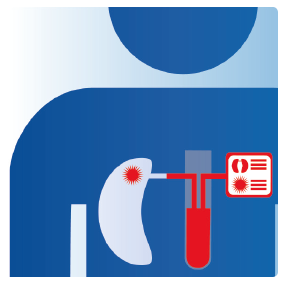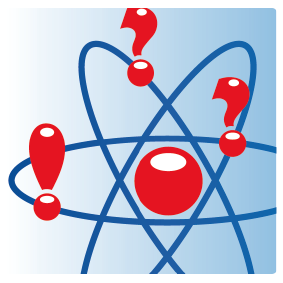Top 10 emerging technologies of 2017

The widespread use of these technologies could be possible in 3-5 years.
(Web Desk) – A series of breakthrough technologies have made their way onto the world stage. These technologies would seemingly give us humans the ability to tackle the world’s most pressing problems, with abilities such as harvesting water from air and carrying out artificial photosynthesis.
The World Economic Forum (WEF) in collaboration with scientific news outlet Scientific American has come up with a list of technologies, which according to the organization, have the potential to bring an improvement to human lives, transform industries and have the ability to protect the planet. According to the experts who have come up with this list, the technologies are at a stage of development which would allow their widespread use in the next 3-5 years.
According to the Head of the Center for the Fourth Industrial Revolution and Member of the Managing Board of the WEF Murat Sonmez, the technologies would ‘redefine industries, blur traditional policies, and create new opportunities never possible before’.
Here are the top ten technologies that have made WEF’s list of emerging technologies.
Liquid Biopsies:

Liquid biopsies would be of crucial use in facilitating the fight against cancer. These would potentially provide a solution in situations where conventional tissue-based biopsies are not possible. Moreover, liquid biopsies would provide a whole range of information compared to tissue-based biopsies, that only give the information present in the sample. Liquid biopsies would allow doctors to easily and swiftly identify disease progression and resistance to treatment which is slower when relying solely on symptoms or imaging.
Harvesting clean water from air:

The ability to harvest clean water from air already exists but it requires high level of moisture and energy. However, a team from MIT and the University of California, Berkeley, has achieved success in carrying out this process without using any energy. The process involves the use of porous crystals. A start-up from Arizona, using a different approach, has been able to produce 2-5 litres of water using solar energy.
Deep learning for visual tasks:
Artificial intelligence is progressing rapidly. Deep learning is a field of artificial intelligence that has allowed computer technology to be used in a way that allows machines to engage in activities such as autonomous driving, medical diagnostics, monitoring water levels and crop yields, and even damage assessment for insurance claims.
Liquid fuels from sunshine:
Scientists have finally found a way to carry out artificial photosynthesis, the process whereby plants use sunlight to create nutrients from carbon dioxide and water. The process involves using sunlight-activated catalysts to split water molecules into hydrogen and water, and then using the produced hydrogen to convert carbondioxide into hydrocarbons (compounds which are components of petroleum and natural gas). Such a technology could be helpful for the solar and wind industries wherein CO2 emitted by combustion is transformed back into fuel.
The human cell atlas:
The Human Cell Atlas was an initiative launched in 2016, and was aimed at identifying every cell type in every issues, and learn which genes, proteins and other molecules are active in each cell type. It also aimed to determine the exact location of cells, how their normal interaction occurs with one another and the effect of genetic and cellular change on the body’s functioning. Such a mapping of the human body will be helpful in improving healthcare. The project is backed by Chan Zuckerburg, an initiative by Mark Zuckerburg and his wife Priscilla Zuckerburg aimed at scientific advancement.
Precision farming:

Precision farming involves the use of sensors, robots, GPS, mapping tools and data-analytics software to aid in the care of plants and help farmers boost crop yield while reducing the usage of waters and chemicals. An example of this technology has been demonstrated by a researcher of the University of Sydney, who has developed a low-cost crop monitoring system in Indonesia that relies on solar technology and cell phones.
Affordable catalysts for green vehicles:
Considerable progress has been made in the development of zero-emission technology; the hydrogen-fed fuel cell. Catalysts available these days are expensive due to the presence of platinum in them. However, the latest development in catalyst technology includes no platinum, and in some cases, no metal at all.
Genomic vaccines:
Genomic vaccines are vaccines based on genes. They are much more effective that conventional medicines. They are quicker to manufacture, which is important in times of viral outbreaks. Moreover, producing genomic vaccines is simpler and less expensive. These attributes come in handy due to the fact that pathogens are evolving continuously and newer and stronger medicines need to be made frequently.
Sustainable design of communities:
Construction new communities by applying environment-friendly designs will change how much energy and water we consume. For example, sending locally-generated solar power to a smart microgrid could reduce electric consumption by half and power consumption to zero. Researchers from UC Berkeley have designed water system whereby waste water from toilets and drains is treated and re-used. Such systems could cut demand for potable water by 70%.
Quantum computing:

Quantum computers have limitless potential but are difficult and costly to produce. However, tech giant IBM has come up with a solution to this problem by giving the public access to the first quantum computer in the cloud. This has led to the publishing of 20 academic papers. Moreover, 50 start-ups and corporations around the world are working to make quantum computing a reality.


